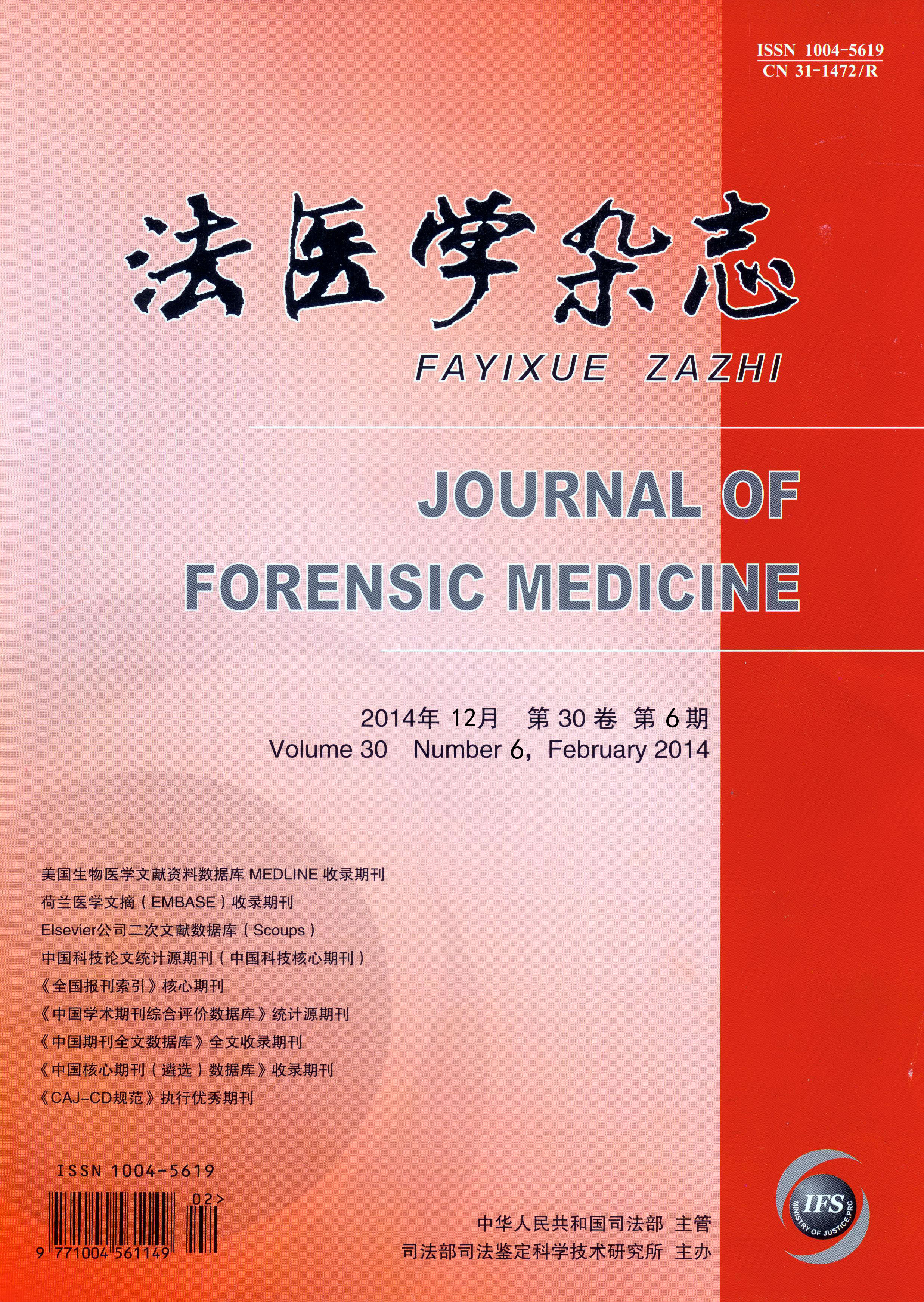|
|
Genetic Polymorphism of Nine Non-CODIS STR Loci in Hunan Province-based Chinese Han Population
GUO JUAN-JUAN, LIU YING, GUO YA-DONG, ET AL.
2014, 30(6):
441-445.
DOI: 10.3969/j.issn.1004-5619.2014.06.010
Objective To determine the allelic frequency distribution and genetic parameters of nine non-CODIS DNA index systems of the short tandem repeat (STR) loci (D2S1772, D6S1043, D7S3048, D8S1132, D11S2368, D12S391, D13S325, D18S1364, and GATA198B05). Methods A total of 353 blood samples were collected, extracted, amplified, and analyzed from unrelated healthy individuals of Han nationality in Hunan Province, China. Results One hundred and fourteen alleles were observed in the population with corresponding allelic frequencies ranged from 0.001 0 to 0.323 0. For all the nine non-CODIS STR loci, the observed genotypic data showed no significant deviations from the Hardy-Weinberg equilibrium. The Ho, He, PIC, DP, and PE of the studied non-CODIS STR loci ranged from 0.108 0 to 0.195 0, 0.805 0 to 0.892 0, 0.770 0 to 0.860 0, 0.925 0 to 0.966 0 and 0.607 0 to 0.780 0, respectively. Conclusion Nine non-CODIS STR loci have high degrees of polymorphisms, which may be useful in individual forensic identification and parentage testing in forensic practice.
Related Articles |
Metrics
|


